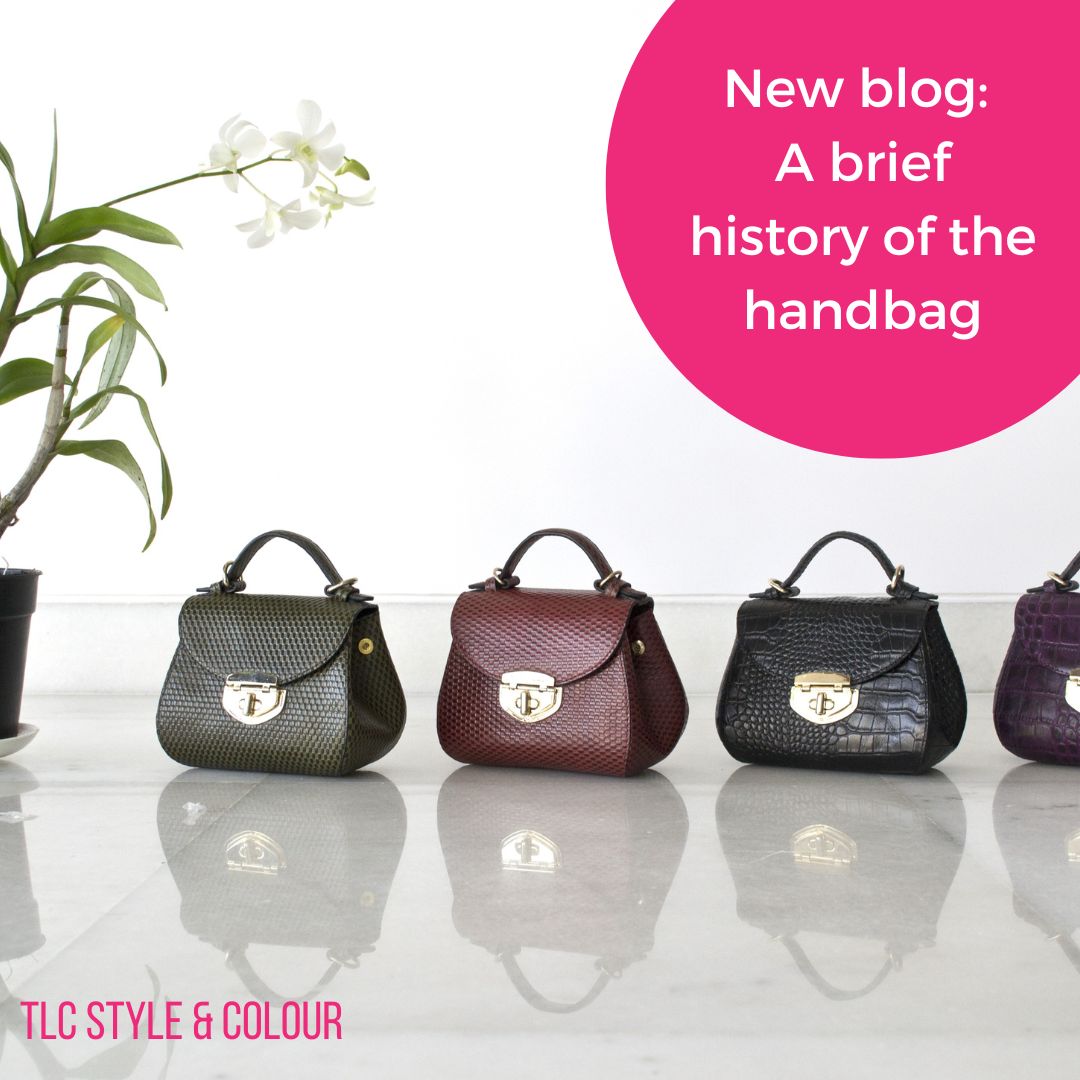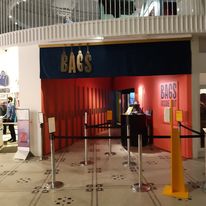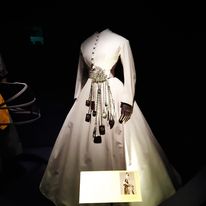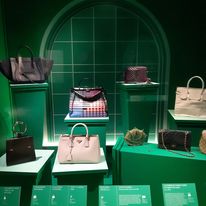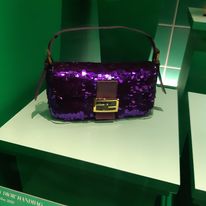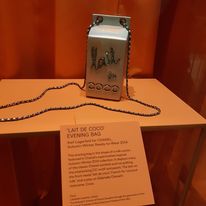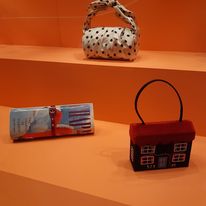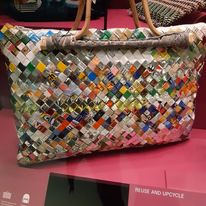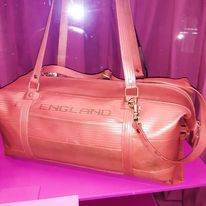Last year I visited the Bags: Inside Out exhibition at the V&A Museum in Kensington. Unfortunately, it’s now closed but if you’re a bag lover and it returns then it’s worth a trip!
It was fascinating to learn more about the history of bags and see so many iconic bags on show.
Bags have developed hugely over the years. Their core function is to carry items from place to place. Originally, handbags were hand-held luggage commonly carried by men and often designed for security and privacy purposes. By the 1880s, they became more fashionable accessories associated instead with women.
Here’s just a few pictures I captured.
- Entrance to the Exhibition
- Chatelaine (hooks and brooches suspended from the waist) Intended to be decorative and useful
- Selection of fashion bags
- Carrie Bradshaw Baguette bag
- Lait de coco evening bag
- Selection of designer bags
I’m not a plastic bag
One particular bag on display was this tote designed by Anya Hindmarch in 2007. At the time, thousands of people queued to purchase the tote from Sainsburys.
At the time, it ignited a debate around the use of plastic bags which contributed to the eventual decision of charging for plastic bags in the UK with a view to reducing the use of them. Here’s a link to read up on it: https://www.anyahindmarch.com/pages/im-not-a-plastic-bag
The plastic bag
Plastic bags were introduced in the 60s. They weren’t originally thought to have been designed as a single-use bag. Instead they were a long-term alternative to replace paper bags which meant chopping down trees. Fast forward decades later, the durable nature of the product caused concerns for the environment. According to The Outline, it can take between 500 – 1,000 years for a plastic shopping bag to break down. Very few single-use plastic bags were being recycled and many ended up in landfill. Cue Anya’s ‘I’m not a plastic bag’ project.
Since October 2015, large shops in England were legally required to charge 5p for all single-use plastic carrier bags. This increased to 10p from May 2021 and affected retailers of any size in England.
Interestingly, Anya has launched a new project. She says: “Despite the impact of our 2007 I’m Not A Plastic Bag project, the problem of single use plastic is far from solved. The mission has changed however, from ‘awareness’ of the problem to ‘circularity’ of materials, something we’ve spent the last two years working on with the I Am A Plastic Bag project.” You can read up on this here: https://www.anyahindmarch.com/collections/i-am-a-plastic-bag.
They look fabulous, but they do come with a designer price tag.
Circularity
This circularity issue is something which comes up all the time – especially in fashion. Regenerating old fibres into new fabric sounds like a great solution, but it’s complicated.
When it comes to clothes, modern day fabric is often a mix of fibres so it’s difficult to ‘close the loop’. Many high street retailers now offer bring back reward schemes to help you to recycle your clothes. But stats from this article in The Guardian in 2016 highlight the issue still relevant today “it would take 12 years for H&M to use up 1,000 tons of fashion waste. If 1,000 tons is recycled, that roughly equates to the same amount of clothes a brand of this size pumps out into the world in 48 hours.” (read the article here: https://www.theguardian.com/commentisfree/2016/apr/03/rana-plaza-campaign-handm-recycling).
If you’re looking for some sustainable fashion tips, I shared six in this blog here.
Saving from landfill
The only way to save things from landfill is to reuse them and recycle them in a different way, right?
- Made from discarded carrier bags washed-up on the Australian Coast
- Weekend bag made from decommissioned fire hoses
At the exhibition, a fabulous example was this weekend bag made from decommissioned fire hoses.
Elvis & Kresse have since stopped all London fire hoses from going to landfill. Since 2005 they’ve saved around 200 tonnes of material. Visit them here: https://www.elvisandkresse.com.
They aren’t the only ones reducing material destined for landfill. If you haven’t come across Nephele yet, they make gorgeous leather bags and purses from leather offcuts which are also destined for landfill. Visit them here: https://nephelebags.com
Too much choice!
What struck me during the exhibition and afterwards, is that there are so many bags! Yet, their function is broadly the same today as it was thousands of years ago: to carry things from one place to another. Fashion, designer, paper, cotton and plastic are all available to you. The choice is yours to decide how eco friendly or sustainable you want to be.
Plastic bag free alternative
Earlier this year, I designed and invested in a small collection of colourful cotton tote bags inspired by this exhibition. These are colourful, made from 100% cotton and have long handles. I specifically chose the range of colours designed with each dominant colouring type in mind. A motivating slogan is printed on one side of the coloured tote. The other side is blank.
If you’re looking for a reusable bag, you can get your hands on one in one of three ways:
- Choose your coloured tote here: https://www.tlcstyleandcolour.co.uk/product/coloured-tote-bags/
- As part of a warm colour fabric collection package here: https://www.tlcstyleandcolour.co.uk/product/new-colour-collection-package-warm/
- As part of a cool colour fabric collection package here: https://www.tlcstyleandcolour.co.uk/product/new-cool-colour-collection-package/
I hope you’ve enjoyed this blog and the one message I hope you take away is this one:

